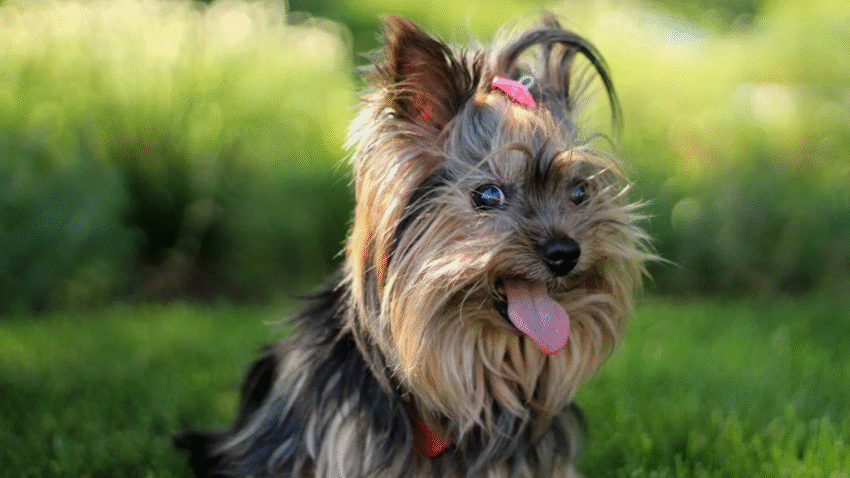Introduction
When temperatures drop and the air gets dry, your dog’s coat needs extra attention. Learning how to care for your dog’s coat in winter can protect them from harsh weather, dry skin, and seasonal shedding. In this guide, we’ll walk you through the best grooming practices, tools, and tips to keep your pup’s coat healthy, shiny, and warm all winter long.
Why Winter Coat Care Matters for Dogs
Winter conditions can take a toll on your dog’s fur and skin. Cold air outside, heated air indoors, wet snow, road salt, and less frequent baths can all lead to:
- Dry, flaky skin
- Dull or brittle fur
- Increased matting
- Shedding or bald patches
- More frequent scratching or itching
A healthy coat acts as natural insulation. Supporting it through winter helps your dog stay warm, protected, and comfortable, no matter the weather.
Step-by-Step Guide to Caring for Your Dog’s Coat in Winter
1. Brush Regularly to Prevent Matting
Brushing your dog often is the #1 way to keep their winter coat in top shape.
Why it matters:
- Distributes natural oils across the skin and fur
- Prevents tangles and mats (especially in longer-haired breeds)
- Removes dead hair to reduce shedding
- Stimulates circulation and healthy hair growth
Recommended brushing schedule:
- Short-haired breeds: 1–2 times per week
- Long-haired or double-coated breeds: Every 1–2 days
Use a slicker brush, bristle brush, or grooming glove depending on coat type.
2. Bathe Less Frequently, But Don’t Skip It
Frequent bathing in winter can strip natural oils and dry out the skin. However, occasional baths are still important to keep the coat clean and prevent build-up of dirt or salt.
Tips for winter bathing:
- Use a moisturizing or oatmeal-based dog shampoo
- Avoid hot water; use lukewarm instead
- Dry thoroughly with a towel and blow dryer on low heat
- Apply a dog-safe leave-in conditioner for extra hydration
Aim to bathe your dog every 4–6 weeks in winter unless they get extra dirty.
3. Protect Paws and Underbelly from Salt and Ice
Salt, ice, and de-icers can irritate your dog’s skin and get trapped in their coat—especially around the paws, belly, and chest.
How to protect:
- Trim excess hair between paw pads to reduce build-up
- Wipe paws and belly after every walk
- Use dog-safe paw balm or wax before heading outside
- Consider using booties or a winter coat for added protection
This keeps your dog’s coat cleaner and reduces the risk of skin infections.
4. Keep Indoor Air Moist
Dry indoor air caused by heating systems can lead to flaky skin and a dull coat. To help your dog stay moisturized:
- Use a humidifier in the rooms where your dog spends time
- Place water bowls away from heaters or vents to prevent evaporation
- Add skin-friendly oils (like fish oil or flaxseed) to your dog’s diet to support coat health
Keeping their environment balanced helps your dog stay comfortable from the inside out.
5. Feed a Coat-Boosting Diet
Nutrition plays a major role in skin and coat health. During winter, support your dog’s coat with a diet rich in:
- Omega-3 and omega-6 fatty acids (for hydration and shine)
- High-quality protein (for strong hair growth)
- Vitamin E and zinc (for skin repair)
You can also ask your vet about coat supplements, especially if your dog is prone to dry skin or seasonal allergies.
Common Mistakes to Avoid
1. Skipping Grooming in Winter
Just because your dog is indoors more doesn’t mean you can neglect brushing. In fact, longer winter coats need even more care to stay healthy.
2. Using Human Hair Products
Human shampoos and conditioners are not pH-balanced for dogs and can irritate their skin. Always use pet-specific grooming products.
3. Letting Wet Fur Stay Damp
Never let your dog air dry after a winter walk or bath. Wet fur can make them cold and more likely to get sick. Always dry them fully.
4. Overbathing
Too many baths in winter can strip protective oils, leading to a dry, itchy coat. Stick to once every 4–6 weeks unless necessary.
5. Not Adjusting for Breed Needs
Short-haired or hairless breeds may need coats or sweaters in winter, while thick-coated breeds might need more brushing and trimming instead of extra layers.
Extra Tips & Recommendations
Tip 1: Trim, Don’t Shave
In winter, avoid shaving your dog’s coat unless medically necessary. If needed, do light trims to manage mats or overgrowth, but leave the natural coat to protect against cold.
Tip 2: Check for Static
Dry air can cause static electricity, especially in longer coats. Lightly misting the brush or using a coat conditioner can reduce static and help manage flyaways.
Tip 3: Schedule a Professional Grooming Session
Even in winter, a professional grooming session every 6–8 weeks can help keep your dog’s coat in optimal shape. Ask for a winter-specific trim or a de-shedding treatment.
Conclusion
Caring for your dog’s coat in winter is about more than just looks—it’s about comfort, warmth, and protection. With regular brushing, proper bathing, and a healthy environment, you’ll keep your pup’s coat soft, shiny, and tangle-free all season long. A little winter grooming goes a long way in keeping your furry friend happy and healthy.
🐾 Bookmark us for more seasonal dog care tips and expert grooming advice!
